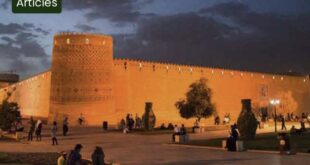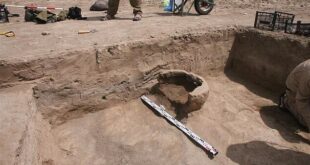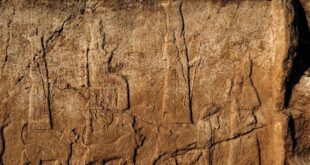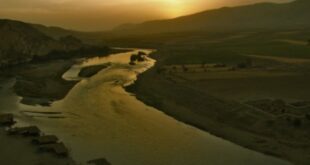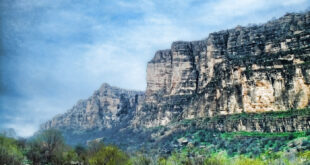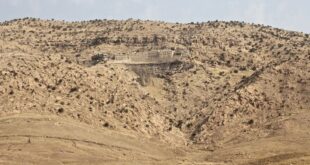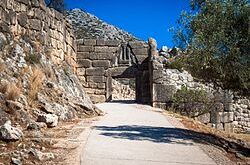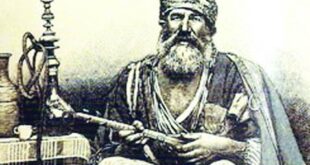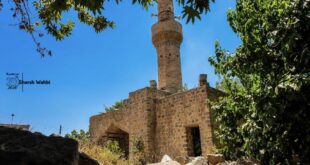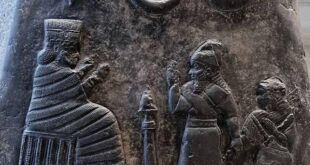Karim Khan Citadel, also known as Arg-e Karim Khan, was built in 1697 following the order and under command of Karim Khan Zand, the famous ruler of the Zand Dynasty. The citadel is a prominent legacy of the Zand Dynasty in Shiraz, especially from the architectural point of view. It …
Read More »Russian archaeologists discover 4,000-year-old city in southern Iraq
Russian researchers have discovered the ruins of a 4,000-year-old settlement that rose from the ashes of the Babylonian empire in Iraq. Russian archaeologists in southern Iraq have uncovered evidence of a settlement from 4,000 years ago, including a temple wall and an ancient port for ships to anchor The ‘lost city’ …
Read More »Archaeologists in Iraq find 2,700-year-old wine press from rule of Assyrian kings
Archaeologists in Iraq revealed Sunday their discovery of a large-scale wine factory from the rule of the Assyrian kings 2,700 years ago, along with stunning monumental rock-carved royal reliefs. The carvings, from 2,700 years ago, show gods, kings and sacred animals. The stone bas-reliefs, showing kings praying to the gods, were cut …
Read More »Complete Guide on Ancient Mesopotamia
Ancient Mesopotamia in a Nutshell Civilization Name: Mesopotamia Period: 3500 BC -500 BC Originated Location: northeast by the Zagros Mountains, southeast by the Arabian Plateau Current Location: Iraq, Iran, Syria, and Turkey Meaning: land between rivers [Ancient Greek] Major Highlights: First civilization in the world Mesopotamian was the world’s earliest civilization between the land of the …
Read More »Bradost (mountain)
Bradost or Chia-y Bradost (Nawakhin), a mountain range over 5,000 feet above sea level and about 25 miles long, stretches northwest from the Rawanduz river opposite the town of Rawanduz in Erbil Governorate, Kurdistan Region, Iraq, to Rubari kuchuk, a tributary of the Great Zab.[1] Bradost mountain range The Shanidar Cave,a Neandertalian archaeological site, lies about 15 …
Read More »Mount Alfaf
Mount Alfaf (Syriac: ܛܘܪܐ ܕܐܠܦܦ, ṭūrāʾ Alfaf), also known as Mount Maqlub (جبل مقلوب in Arabic), is a mountain in the Nineveh Plains region in northern Iraq. The mountain lies 30 km to the northeast of Mosul and some 15 km from Bartella. The largest town on the mountain is Mirki which is inhabited by Syriac Orthodox Christians.[1] Mount Alfaf Mount Maqlub, Ṭūrāʾ Alfaf View of the …
Read More »Mycenae
Mycenae (/maɪˈsiːniː/ my-SEE-nee;[2] Ancient Greek: Μυκῆναι or Μυκήνη, Mykē̂nai or Mykḗnē) is an archaeological site near Mykines in Argolis, north-eastern Peloponnese, Greece. It is located about 120 kilometres (75 miles) south-west of Athens; 11 kilometres (7 miles) north of Argos; and 48 kilometres (30 miles) south of Corinth. The site is 19 kilometres (12 miles) inland from the Saronic Gulf and built upon a hill rising 900 feet (274 metres) above …
Read More »Idris Bitlisi
Idris Bitlisi (c. 18 January 1457[1] – 15 November 1520), sometimes spelled Idris Bidlisi, Idris-i Bitlisi, or Idris-i Bidlisi (“Idris of Bitlis“), and fully Mevlana Hakimeddin İdris Mevlana Hüsameddin Ali-ül Bitlisi, was an Ottoman Kurdish religious scholar and administrator. Even though many scholarly works mention Bitlis as Bitlisi’s place of birth, a new research states that he was actually born in the district of …
Read More »The Great Mosque of Khurmal, a national treasure
The great mosque of Khurmal is one of the ancient mosques of Kurdistan which is located in Khurmal district which is a small historic town in Halabja province. This mosque and its minaret were created by Abdullah, the grandson of the second caliph Alkattab, during the Hasanwayhids era (959-1015), …
Read More »Kassites
It is thought that the Kassites originated as tribal groups in the Zagros Mountains to the north-east of Babylonia. Their leaders came to power in Babylon following the collapse of the ruling dynasty of the Old Babylonian Period in 1595 BC. The Kassites retained power for about four hundred years …
Read More » History of Kurdistan
History of Kurdistan
